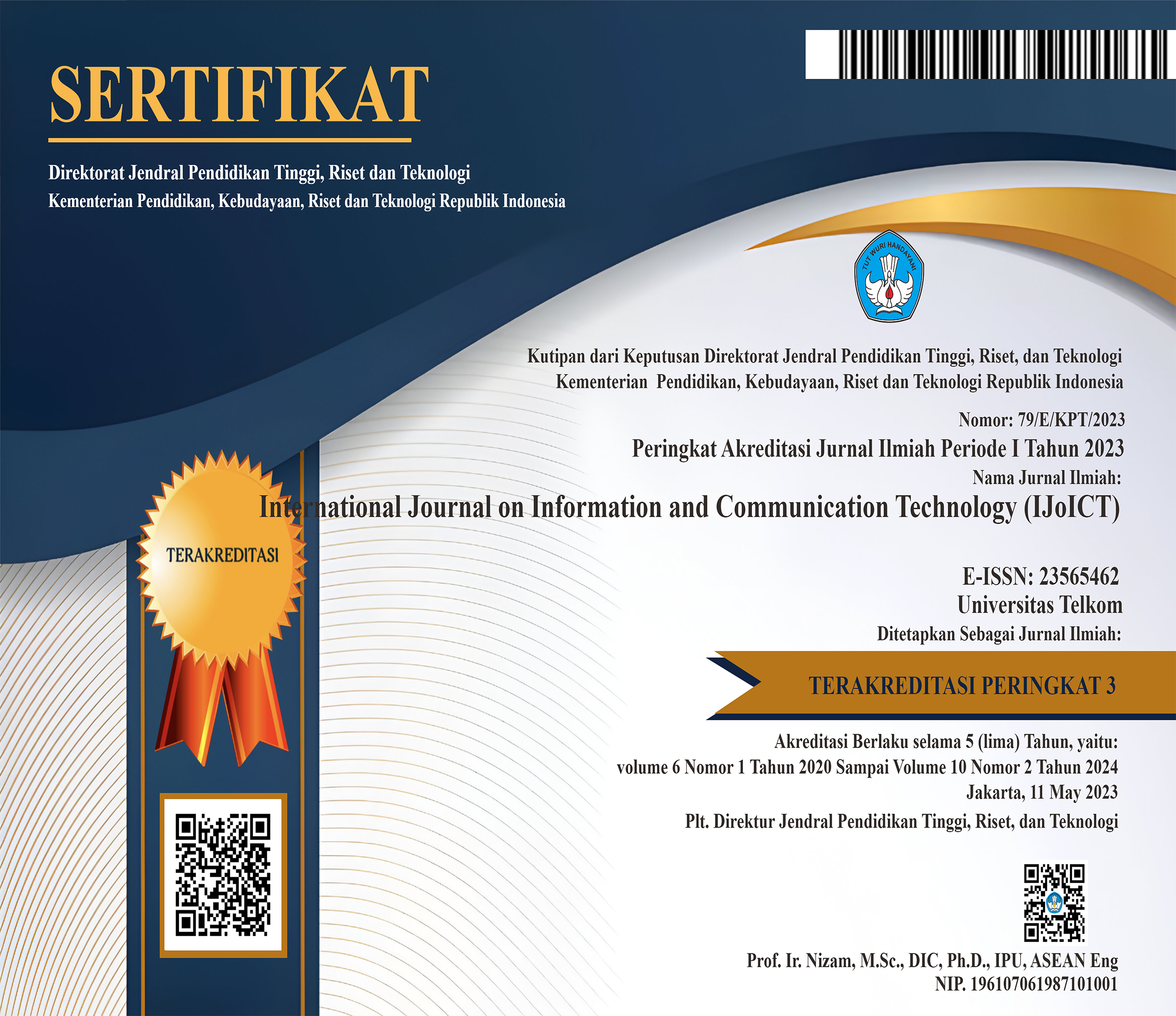Wind Wave Prediction by using Autoregressive Integrated Moving Average model : Case Study in Jakarta Bay
 Abstract views: 1210
,
Abstract views: 1210
,
 PDF downloads: 537
PDF downloads: 537
Abstract
Downloads
References
Akpınar, A., van Vledder, G. P., Kömürcü, M. ˙I., & Özger, M. (2012). Evaluation of the numerical wave model (swan) for wave simulation in the black sea. Continental Shelf Research, 50, 80–99.
Box, G. E., Jenkins, G. M., Reinsel, G. C., & Ljung, G. M. (2015). Time series analysis: forecasting and control. John Wiley & Sons.
Cadenas, E., & Rivera, W. (2010). Wind speed forecasting in three different regions of mexico, using a hybrid arima–ann model. Renewable Energy, 35(12), 2732–2738.
Conejo, A. J., Plazas, M. A., Espinola, R., & Molina, A. B. (2005). Day-ahead electricity price forecasting using the wavelet transform and arima models. IEEE transactions on power systems, 20(2), 1035– 1042.
Deka, P. C., & Prahlada, R. (2012). Discrete wavelet neural network approach in signiï¬cant wave height forecasting for multistep lead time. Ocean Engineering, 43, 32–42.
French, K. R., Schwert, G. W., & Stambaugh, R. F. (1987). Expected stock returns and volatility. Journal of ï¬nancial Economics, 19(1), 3–29.
Huang, T. (2013). The box-jenkins methodology for time series models. America: Addison Wesley Publishing Company Inc.
Kohzadi, N., Boyd, M. S., Kermanshahi, B., & Kaastra, I. (1996). A comparison of artiï¬cial neural network and time series models for forecasting commodity prices. Neurocomputing, 10(2), 169– 181.
Mandal, S., & Prabaharan, N. (2010). Ocean wave prediction using numerical and neural network models.
Moeini, M., & Etemad-Shahidi, A. (2007). Application of two numerical models for wave hindcasting in lake erie. Applied Ocean Research, 29(3), 137–145.
Pai, P.-F., & Lin, C.-S. (2005). A hybrid arima and support vector machines model in stock price forecasting. Omega, 33(6), 497–505.
Radziukynas, V., & Klementavicius, A. (2014a). Short-term wind speed forecasting with arima model. In Power and electrical engineering of riga technical university (rtucon), 2014 55th international scientiï¬c conference on (pp. 145–149).
Radziukynas, V., & Klementavicius, A. (2014b). Short-term wind speed forecasting with arima model. In Power and electrical engineering of riga technical university (rtucon), 2014 55th international scientiï¬c conference on (pp. 145–149).
Salcedo-Sanz, S., Borge, J. N., Carro-Calvo, L., Cuadra, L., Hessner, K., & Alexandre, E. (2015). Signiï¬cant wave height estimation using svr algorithms and shadowing information from simulated and real measured x-band radar images of the sea surface. Ocean Engineering, 101, 244–253.
Sorensen, R. M. (1993). Basic wave mechanics: for coastal and ocean engineers. John Wiley & Sons.
Sverdrup, H. U. (1947). Wind, sea and swell. theory of relations for forecasting. US Navy Hydrog. Ofï¬ce, Pub., 601, 44002E
Thomas, T. J., & Dwarakish, G. (2015). Numerical wave modelling–a review. Aquatic Procedia, 4, 443–448.
Tseng, F.-M., Tzeng, G.-H., Yu, H.-C., Yuan, B. J., et al. (2001). Fuzzy arima model for forecasting the foreign exchange market. Fuzzy sets and systems, 118(1), 9–19.
Weggel, J. R., & Sorensen, R. M. (1986). Ship wave prediction for port and channel design. In Ports’ 86 (pp. 797–814).
Wei, W. (2006). Time analysis univariate and multivariate methods. America: Addison Wesley Publishing Company Inc.
Weissman, D. (1973). Two frequency radar interferometry applied to the measurement of ocean wave height. IEEE Transactions on Antennas and Propagation, 21(5), 649–656.
Willmott, C. J., & Matsuura, K. (2005). Advantages of the mean absolute error (mae) over the root mean square error (rmse) in assessing average model performance. Climate research, 30(1), 79–82.

This work is licensed under a Creative Commons Attribution 4.0 International License.
Manuscript submitted to IJoICT has to be an original work of the author(s), contains no element of plagiarism, and has never been published or is not being considered for publication in other journals. Author(s) shall agree to assign all copyright of published article to IJoICT. Requests related to future re-use and re-publication of major or substantial parts of the article must be consulted with the editors of IJoICT.








.png)

.jpg)




